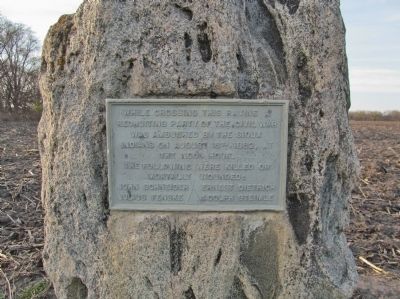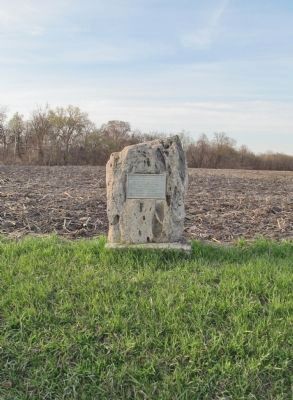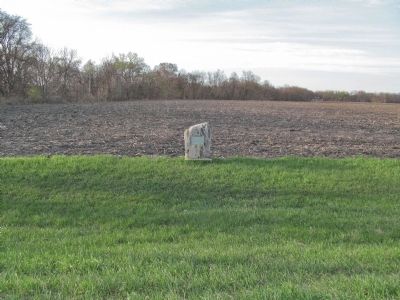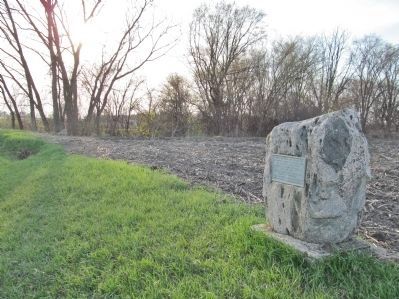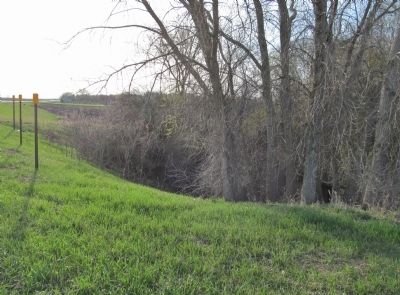Near New Ulm in Brown County, Minnesota — The American Midwest (Upper Plains)
Ravine Ambush
recruiting party of the Civil War
was ambushed by the Sioux
Indians on August 18th, 1862, at
the noon hour.
The following were killed or
mortally wounded:
John Schneider • Ernest Dietrich
Julius Fenske • Adolph Steimle
Topics. This memorial is listed in this topic list: Wars, US Indian. A significant historical year for this entry is 1862.
Location. 44° 21.214′ N, 94° 34.858′ W. Marker is near New Ulm, Minnesota, in Brown County. Memorial is on County Highway 29, 0.1 miles east of 205th Avenue, on the left when traveling east. Touch for map. Marker is in this post office area: New Ulm MN 56073, United States of America. Touch for directions.
Other nearby markers. At least 8 other markers are within 5 miles of this marker, measured as the crow flies. Taken by Surprise (approx. 0.6 miles away); Junior Pioneers Tablet (approx. 0.6 miles away); Milford State Monument (approx. 0.6 miles away); The Milford Reservation Line (approx. 1.6 miles away); Essig, Minnesota (approx. 2.4 miles away); Harkin Store (approx. 2.4 miles away); Turnverein Founding Site (approx. 3.9 miles away); Pioneer Monument (approx. 4.7 miles away). Touch for a list and map of all markers in New Ulm.
Regarding Ravine Ambush. In August 1862, the Minnesota Dakota, also known by the French term, “Sioux," waged war against the United States following two years of unfulfilled treaty obligations. After attacking the Redwood (Lower Sioux) Agency, a remote government outpost, the Dakota moved with speed and surprise across southwestern Minnesota and what was then eastern Dakota Territory, killing nearly everyone in their path. They killed approximately 800 settlers and soldiers, took many prisoners, and caused extensive property damage throughout the Minnesota River Valley.
Also see . . . 1862 Dakota War. "It was the largest Indian war in American history. The main battleground was the entire Minnesota River Valley in southern and central Minnesota. The uprising spread into the Dakota Territories and sent panic into Nebraska, Iowa and Wisconsin. In Minnesota, Indians did mass attacks on a fort and an entire town - both twice. Contrary to what folklore and Hollywood tell us, this was almost unheard of in any of the Indian campaigns. ...To this day, that number of civilians killed on American soil as a result of hostile action is exceeded only by the attacks on 9/11." (Submitted on May 14, 2014.)
Additional keywords. U.S.–Dakota War of 1862
Credits. This page was last revised on June 16, 2016. It was originally submitted on May 14, 2014, by Keith L of Wisconsin Rapids, Wisconsin. This page has been viewed 1,020 times since then and 40 times this year. Photos: 1, 2, 3, 4, 5. submitted on May 14, 2014, by Keith L of Wisconsin Rapids, Wisconsin.
